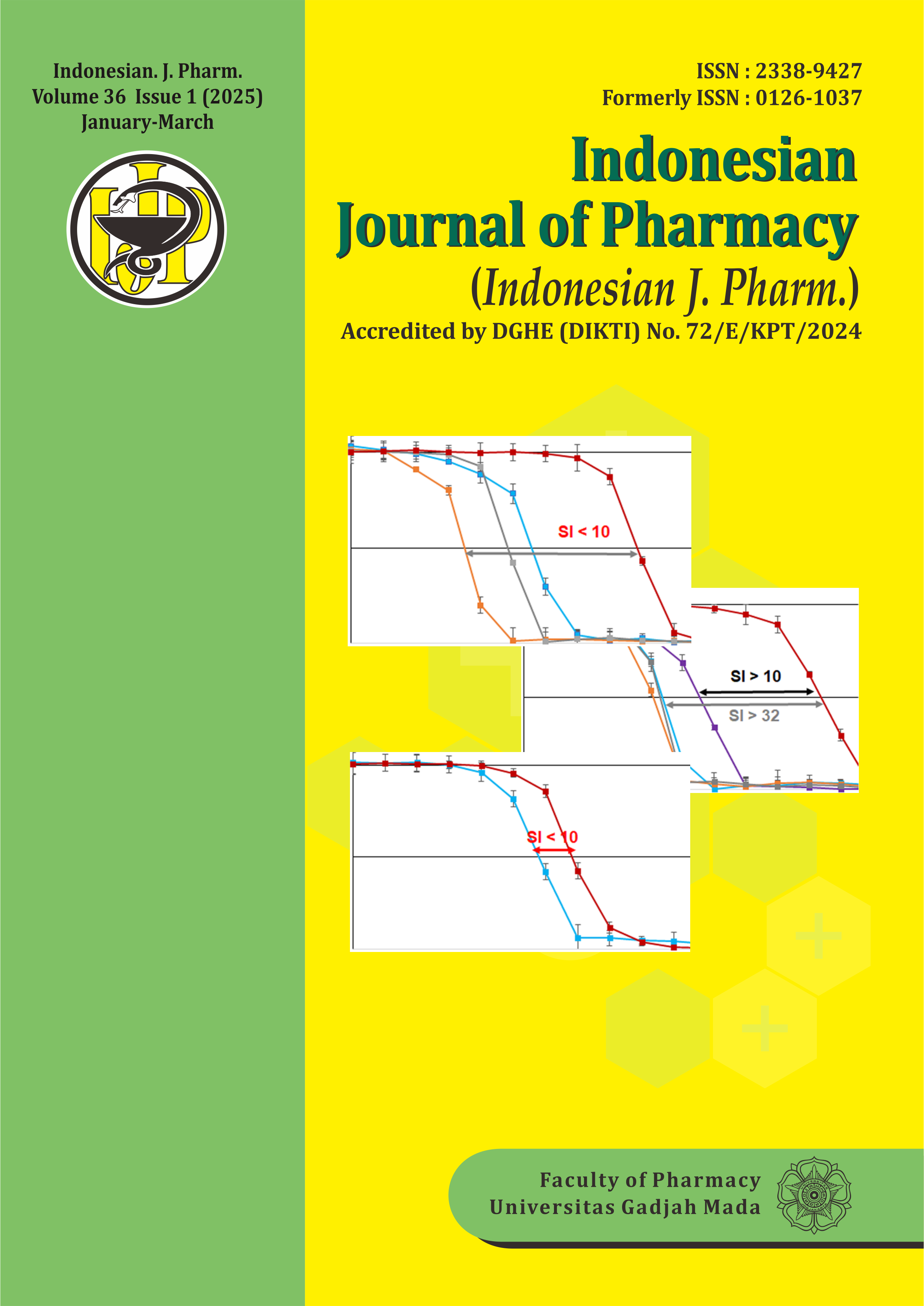Pharmacological Therapy for Ischemic Stroke Patients Accordance to Clinical Practice Guidelines
Abstract
Stroke ranks as the second most common cause of mortality and the third most significant cause of disability globally. The frequency of stroke remains elevated in low- and middle-income countries, affecting 70% of the population. Additionally, stroke-related deaths and disability-adjusted life years might reach as high as 87%. This study aims to evaluate the suitability of a pharmacological treatment approach for stroke patients in Malaysia, specifically in a public hospital setting. The evaluation will be based on the Clinical Practice Guidelines (CPG) 2012. A four-year retrospective, cross-sectional study was undertaken using medical records conducted among (n=682) hospitalized patients at Sungai Buloh Hospital; only (n=126) conforms with inclusion criteria and confirmed ischemic stroke diagnoses. Data was gathered utilizing a self-created data-collecting form that included demographic information, comorbidity, and pharmacological treatment. The mean age of the reported cases was 66.66 years, with the majority (58%) males and only (42%) females. The compliance to the Clinical Practice Guideline Malaysia 2012 for ischemic stroke inpatient setting in a public hospital is (>72%) (p=0.001). A significant proportion of patients had pharmacological therapeutic management in adherence to stroke recommendations, which is considered a critical factor in reducing stroke-related disability and mortality.
References
2. Abilleira, S., Gallofré, M., Ribera, A., Sánchez, E., & Tresserras, R. (2009). Quality of in-hospital stroke care according to evidence-based performance measures. Stroke, 40(4), 1433-1438.
3. Yaghi, S., Bernstein, R. A., Passman, R., Okin, P. M., & Furie, K. L. (2017). Cryptogenic stroke: research and practice. Circulation research, 120(3), 527-540.
4. Benjamin, E. J., Muntner, P., & Bittencourt, M. S. (2019). Heart disease and stroke statistics-2019 update: a report from the American Heart Association. Circulation, 139(10), e56-e528.
5. Adamson, J., A. Beswick, et al. (2004). "Is stroke the most common cause of disability?" Journal of Stroke and Cerebrovascular Diseases 13(4): 171-177.
6. Jauch, E. C., J. L. Saver, et al. (2013). "Guidelines for the early management of patients with acute ischemic stroke." Stroke 44(3): 870-947.
7. Song, D., E. Tanaka, et al. (2015). "Factors associated with early hospital arrival in patients with acute ischemic stroke." Journal of stroke 17(2): 159
8. Greater Manchester compliance with the RCP National Clinical Guideline for Stroke, 2016. Retrieved from http://gmsodn.org.uk/wp-content/uploads/2017/03/Compliance-with-the-RCP-national-clinical-guideline-for-stroke-2016-public-version.pdf
9. Hacke, W., M. Kaste, et al. (2008). "Thrombolysis with alteplase 3 to 4.5 hours after acute ischemic stroke." New England Journal of Medicine 359(13): 1317-1329.
10. Caughey, G. E., A. I. Vitry, et al. (2008). "Prevalence of comorbidity of chronic diseases in Australia." BMC public health 8(1): 221.
11. Tessier, A., L. Finch, et al. (2008). "Validation of the Charlson Comorbidity Index for predicting the functional outcome of stroke." Archives of physical medicine and rehabilitation 89(7): 1276-1283.
12. Clinical Practice Guideline. 2nd Edition (2012). Retrieved on 13 May 2017, from Malaysian Society of Neurosciences
13. AlSibai, A., & Qureshi, A. I. (2016). Management of acute hypertensive response in patients with ischemic stroke. The Neurohospitalist, 6(3), 122-129.
14. Wang, Y., Pan, Y., Zhao, X., Li, H., Wang, D., Johnston, S. C., ... & Wang, Y. (2015). Clopidogrel with aspirin in acute minor stroke or transient ischemic attack (CHANCE) trial: one-year outcomes. Circulation, 132(1), 40-46.
15. Kernan, W. N., Ovbiagele, B., Black, H. R., Bravata, D. M., Chimowitz, M. I., Ezekowitz, M. D., ... & Johnston, S. C. (2014). Guidelines for preventing stroke in patients with stroke and transient ischemic attack: a guideline for healthcare professionals from the American Heart Association/American Stroke Association. Stroke, 45(7), 2160-2236.
16. Philip M. W. Bath, Robert Iddenden, and Fiona J. Bath (2000). Low-Molecular-Weight Heparins and Heparinoids in Acute Ischemic Stroke: A Meta-Analysis of Randomized Controlled Trials. Stroke. 2000;31:1770–1778 https://doi.org/10.1161/01.STR.31.7.1770
17. Wahlgren, N., N. Ahmed, et al. (2008). "Thrombolysis with alteplase 3–4· 5 h after acute ischemic stroke (SITS-ISTR): an observational study." The Lancet 372(9646): 1303-1309.
18. Zhao W, Xiao ZJ, Zhao SP. The Benefits and Risks of Statin Therapy in Ischemic Stroke: A Review of the Literature. Neurol India 2019;67:983-92
19. Yang Z, Edwards D, Massou E, Saunders CL, Brayne C, Mant J. Statin use and high-dose statin use after ischemic stroke in the UK: a retrospective cohort study. Clin Epidemiol. 2019;11:495-508 https://doi.org/10.2147/CLEP.S201983
20. Lees, K. R., E. Bluhmki, et al. (2010). "Time to treatment with intravenous alteplase and outcome in stroke: an updated pooled analysis of ECASS, ATLANTIS, NINDS, and EPITHET trials." The Lancet 375(9727): 1695-1703.
21. Purrucker, J. C., K. Haas, et al. (2017). "Coagulation Testing in Acute Ischemic Stroke Patients Taking Non–Vitamin K Antagonist Oral Anticoagulants." Stroke 48(1): 152-158.
22. Lee, E. H. (2011). American Society of Health-System Pharmacists. Pharmacy and Therapeutics, 36(3), 159.








